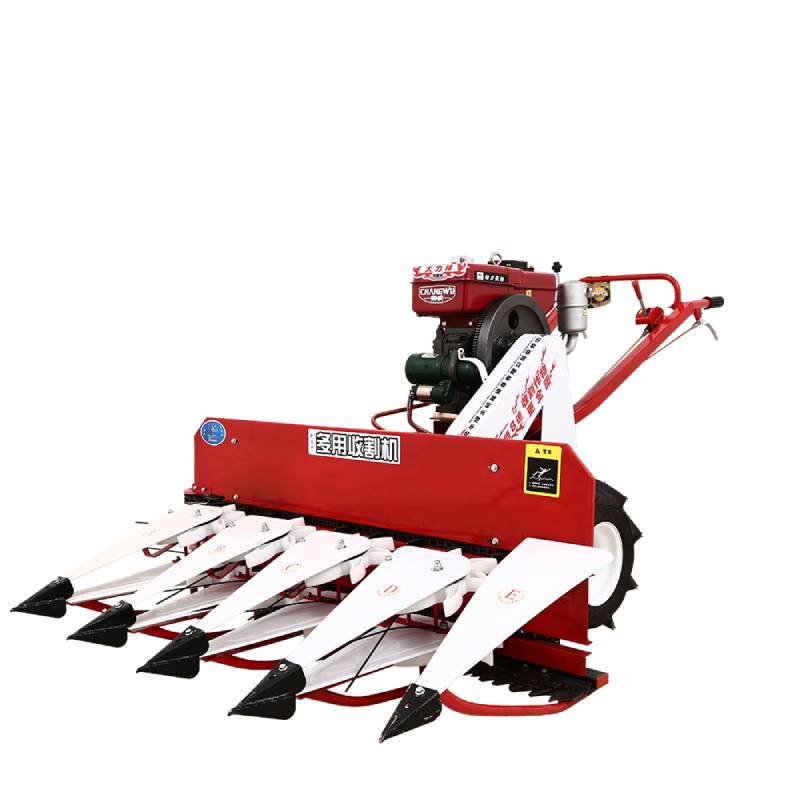Reaper Binder: Faster, Cleaner Harvests—Ready to Upgrade?
Hercules reaper: insider notes on a workhorse reaper binder
I’ve been walking fields and factory aisles long enough to see fashions come and go in farm kit. But the humble reaper binder keeps showing up where uptime matters more than hype. The Hercules GD120C2 comes out of Julu Industrial Park, Xingtai City, Hebei Province, China, and—judging by dealer chatter and a few dusty demos I sat through—this unit is built to survive real-world abuse.

Where the market is heading
Two trends stand out: compact machines optimized for small plots (rice/wheat rotations, terraced fields), and rugged mid-size units for cooperatives seeking lower total cost of ownership. Telematics and GNSS guidance are creeping in, sure, but farmers still ask first about grain loss, fuel burn, and parts availability. The Hercules pitch aligns with that: a practical reaper binder with straightforward mechanics, serviceable in the village workshop.
Process flow, build, and test
Materials and methods: high-tensile chassis sections, laser/CNC-cut sheet, robotic and manual MIG welds at stress nodes, sealed bearings at the cutter and binder drives, and a powder-coated finish over phosphate pretreatment. Assembly includes belt-tension setting, chain alignment, and binder timing checks.
Testing standards and QA: end-of-line no-load run-in (≈30–60 min), brake and steering checks, header vibration at rated rpm, and binder knot quality tests. Factory QA typically references EN/ISO safety baselines (e.g., ISO 4254 series) and risk assessment per ISO 12100. For performance, many buyers ask for compliance with national test methods similar to GB/T combine/reaper benchmarks; real-world use may vary with crop moisture.
Service life: with sane maintenance, wear parts at 400–800 h intervals; key driveline components 2,000–3,000 h; whole-machine life often 3,000–4,000 h. I’ve seen machines exceed that in light soils.
Hercules GD120C2 quick specs
| Cutting/binding width | ≈1.2–1.5 m (adjustable header options) |
| Power | ≈22–45 kW diesel (tier depends on market) |
| Field capacity | 0.2–0.6 ha/h (crop density and operator skill) |
| Loss rate | Typically ≤2–3% in dry wheat; wet rice higher |
| Transport/Weight | Compact footprint; ≈1.1–1.6 t depending on options |
| Origin | Julu Industrial Park, Xingtai, Hebei, China |
Specs are indicative; confirm exact configuration and emissions tier with the manufacturer.
Applications and feedback
Use it for rice, wheat, and barley—especially in small plots, flood-prone paddies, and mixed soil conditions. On demo days, operators liked the tidy sheaf bundles and low fuel sip. One cooperative manager told me their reaper binder “paid itself back in two seasons” thanks to reduced hired labor and fewer rain delays.
Customization and options
- Header width kits; rice reel vs wheat crop lifters
- Rubber track or tire configuration (terrain dependent)
- Sheaf density and twine type options (wet vs dry straw)
- Fogging pre-cleaner, extended chaff guards, LED work lights
- Basic hour-meter telemetry; GPS row guidance on request
Vendor comparison (field notes)
| Vendor | Positioning | Lead time | Strengths | Watch-outs |
|---|---|---|---|---|
| Hercules GD120C2 | Value-focused reaper binder | ≈20–45 days | Rugged build, simple maintenance, customizable | Spec variation by market; verify emissions tier |
| Imported Brand Y | Premium compact binder | ≈60–90 days | Refined controls, dealer network | Higher acquisition cost, pricier parts |
| Regional OEM X | Budget segment | ≈15–30 days | Low entry price | Inconsistent QA; limited after-sales |
Case snapshots and test data
Punjab cooperative (200 ha): swapped aging units for two Hercules machines; reported ≈1.8% lower grain loss and ≈12% fuel savings over a season (dry wheat). Coastal delta rice group: operators praised the binder’s knot consistency after rain; maintenance logs showed
Certifications and compliance
Factory systems typically align to ISO 9001. Safety design targets ISO 12100 and ISO 4254 series; market-specific CE marking may apply. For performance verification, ask for test reports referencing GB/T-style combine/reaper methods or OECD-style official test summaries.
Citations
Latest news
-
Mini Combine Harvester for Paddy – Compact, Efficient Rice Harvesting SolutionsNewsNov.24,2025
-
Mini Chain Harvester: Compact Forestry Solutions for Sustainable LoggingNewsNov.23,2025
-
Kartar Mini Harvester – Compact, Efficient Harvesting Machinery for Small FarmsNewsNov.23,2025
-
Compact Power: Elevate Your Farming with Harvesting Machine SmallNewsNov.22,2025
-
Discover the Power and Potential of Harvester Mini Combine Machines | Efficient Small-Scale HarvestingNewsNov.22,2025
-
Compact Harvester Machines: Small-Scale Agriculture’s Big AdvantageNewsNov.21,2025








